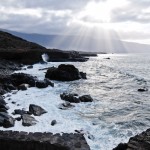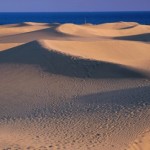Rupert Parker puts on his hiking boots and explores the rugged interior of Gran Canaria
Most people come to Gran Canaria, the second largest of the Canary Islands, for a beach holiday, enjoying the sun and fine white sands of the south. They tend to stay in the resorts not venturing any further than the bar and the beach. Of course, you’ll need a car to explore it properly and but the big surprise of Gran Canaria is how unspoilt it actually is – the interior is almost empty, populated by extinct volcanoes, rugged peaks rising almost 2000m, deep ravines and indigenous pine and laurel forests.
It’s been designated a World Biosphere Reserve because of its unusually rich ecosystems containing more than 100 unique species of plants. The varied topography hosts a series of micro-climates, like a “continent in miniature”.


The island’s mountainous interior, La Cumbre or summit, was crafted by millions of years of volcanic eruptions and erosions. One particularly violent explosion created the Caldera de Tejeda, a crater 18km wide when the centre of the volcano sank. It’s now a paradise for cyclists and walkers, with Roque Nublo and Roque Bentayga, two freestanding volcanic pillars, dominating the horizon.
Everywhere you’ll find evidence of the original inhabitants, the Guanches who failed to resist the Spanish conquest. Near Santa Lucia, in the south-east of the island, is Fortaleza Grande, a huge craggy outcrop, the site of their last battle, in 1493. It’s said they threw themselves off the top, rather than be captured and the excellent visitor centre tells the unfortunate story.

DNA evidence suggests they were Berbers from North Africa, who arrived around 100AD and lived peacefully until the arrival of the Spanish in 1483. There’s no evidence of boats or navigation skills and some theories suggest they were brought here by the Romans, deported as a troublesome community. The Spaniards found a race of blonde, blue-eyed people and, although many were killed, present-day Canarians still have a large percentage of their DNA in their blood.
I start in the capital, Las Palmas, the Canary Islands’ biggest city, with a well preserved historic quarter, made rich by the sea traffic started by Christopher Columbus on his way to the new world. I’m actually staying on the other side of the island, an easy thirty-minute drive on the motorway, in Puerto de Las Nieves, a sleepy fishing village. There’s no sandy beach here, just pebbles, but the natural rock pools are perfect for bathing.
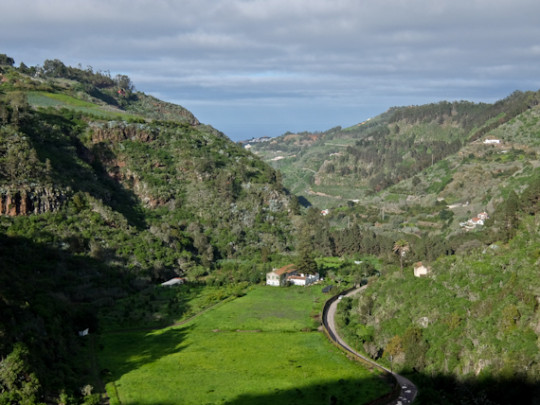
For the first of my hikes, I drive to Cruz de La Laguna, at almost 900m, and drop down gradually into Barranco de La Virgen. This fertile canyon is home to groves of lemons and oranges and dotted with traditional farmhouses. The path leads through lush and fertile surroundings before climbing back up through cluster of roads, back to La Laguna.
Next day I set off for the tiny village of Acusa Seca which has several cave houses, still occupied. Huge cliffs to my right are honeycombed with more caves, the original homes of the Guanches. The path winds round to Cruz de la Esquina, drops slightly and reaches a road, passing more cave houses. It’s a steep climb up through hairpin bends but fortunately, there’s little traffic. I reach Vega de Acusa and its attractive church of La Candelaria before continuing down the road back to the car park near Acusa Seca.

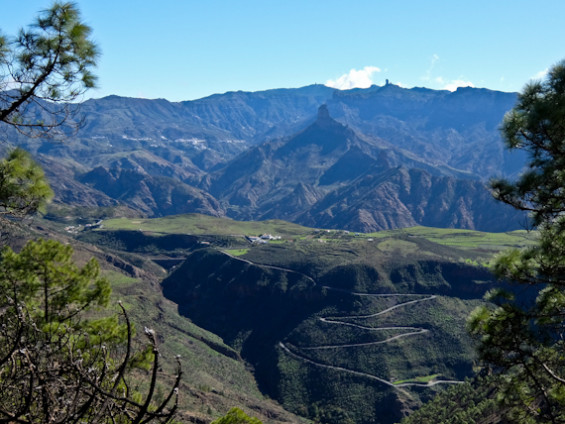
The best and the most difficult I leave until last. This is a 24 km circular walk starting near Cruz de Tejeda, right in the dead centre of the island. The mist is still hovering around the mountains but it soon clears as I climb up to Pico de las Nieves, Gran Canaria’s highest peak at 1949m. A radar station prevents me reaching the very top but I continue on a pleasant path to reach the distinctive Roque Nublo. I circuit its base before dropping down to the Presa de los Hornos reservoir and then climbing back to my starting point at Degollada Becerra.
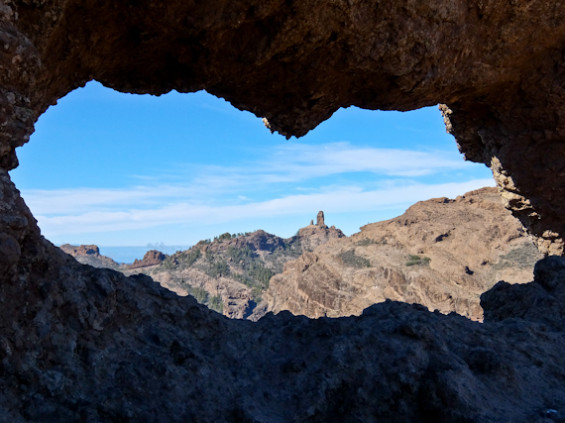
During three days of walking, I’ve been impressed by the well-signed network of trails that criss-cross the island. They often lead through small villages where you’re always guaranteed good local wine and regional Canarian dishes. The only real problem is that there are few circular walks so unless you retrace your steps, you’re going to need a taxi, as the bus service is limited. Don’t let that put you off as, at every turn, you’ll be rewarded with stunning vistas of the mountains, forests and coast.
All images (C) Rupert Parker
Tell Me More About walking in Gran Canaria
Ryanair, EasyJet and BA all fly direct from the UK to Las Palmas de Gran Canaria.
Gran Canaria Active has information about outdoor activities.
Gran Canaria has information about the island.
Turinka Canarias runs archaeological tours.
Climbo offers guided adventure activities.
Cicerone’s Walking on Gran Canaria has 45 self-guided day walks.
Hotel & Spa Cordial Roca Negra in Puerto de Las Nieves has sea views.
Finca Las Longueras is a delightful boutique hotel, in the valley above Puerto de Las Nieves.
Hotel Rural La Hacienda del Buen Suceso is located in a beautiful colonial building just outside Arehucas.


